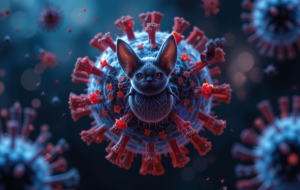Stanford Researchers Develop Breakthrough All-Atom Diffusion Model for Protein Design, with Potential to Revolutionize Human Health

Stanford Researchers Develop Breakthrough All-Atom Diffusion Model for Protein Design, with Potential to Revolutionize Human Health
In a groundbreaking development for protein design, a team of researchers at Stanford University has unveiled Protpardelle, an all-atom diffusion model that can co-design protein structure and sequence. Protpardelle represents a significant leap forward in the field, enabling the generation of proteins with exceptional quality, diversity, and novelty.
Proteins are essential to life, performing a wide range of functions from catalyzing biochemical reactions to transporting molecules and providing structural support. The ability to design proteins with desired properties could revolutionize diverse fields such as medicine, materials science, and energy production.
Protpardelle achieves its breakthrough capabilities by addressing the intricate interplay between continuous and discrete protein structures. Proteins are made up of amino acids, which are linked together in a sequence. The sequence of a protein determines its structure, which in turn dictates its function.
Protpardelle is a diffusion model, which means that it generates new protein structures and sequences by gradually modifying existing ones. The model is trained on a massive dataset of known protein structures and sequences, which allows it to learn the underlying rules of protein design.
To generate a new protein, Protpardelle starts with a random sequence and structure. It then iteratively modifies the sequence and structure, guided by the rules of protein design and the feedback from the dataset. This process continues until a protein with the desired properties is generated.
Protpardelle has been shown to generate proteins of exceptional quality, diversity, and novelty. In one experiment, Protpardelle was able to generate proteins with a success rate of approximately 60% when assessed by structural similarity metrics. Visual examination of samples revealed a diverse array of protein folds, richly adorned with secondary structural elements. Protpardelle meticulously maintains the chemical integrity of generated samples, aligning with the distribution of bond lengths and angles observed in natural proteins.
The introduction of Protpardelle signifies a paradigm shift in protein design, unlocking doors to unprecedented possibilities in biotechnology and pharmaceuticals. Protpardelle’s potential to revolutionize protein engineering by seamlessly marrying structure and sequence heralds a new era in the field.
How Protpardelle Could Impact Human Health
Protpardelle has the potential to impact human health in a number of ways. For example, the model could be used to design new proteins that can be used as drugs or vaccines. Protpardelle could also be used to design proteins that can be used to improve the efficiency and safety of existing treatments. Additionally, Protpardelle could be used to design new proteins that can be used to create new diagnostic tools and imaging modalities.
Here are some specific examples of how Protpardelle could be used to improve human health:
- Design new drugs and vaccines: Protpardelle could be used to design new drugs that target specific diseases or conditions. For example, the model could be used to design a new drug that targets the cancer cells in a patient’s tumor. Protpardelle could also be used to design new vaccines that are more effective at preventing infectious diseases.
- Improve the efficiency and safety of existing treatments: Protpardelle could be used to design proteins that can be used to improve the delivery or efficacy of existing drugs. For example, the model could be used to design a protein that can help a drug to cross the blood-brain barrier and reach its target in the brain. Protpardelle could also be used to design proteins that can reduce the side effects of existing drugs.
- Develop new diagnostic tools and imaging modalities: Protpardelle could be used to design proteins that can be used to develop new diagnostic tools and imaging modalities. For example, the model could be used to design a protein that can bind to cancer cells and make them visible on a PET scan. Protpardelle could also be used to design proteins that can be used to develop new blood tests or urine tests for diseases.
Overall, Protpardelle is a powerful new tool that has the potential to revolutionize protein design and have a significant impact on human health.
Source






